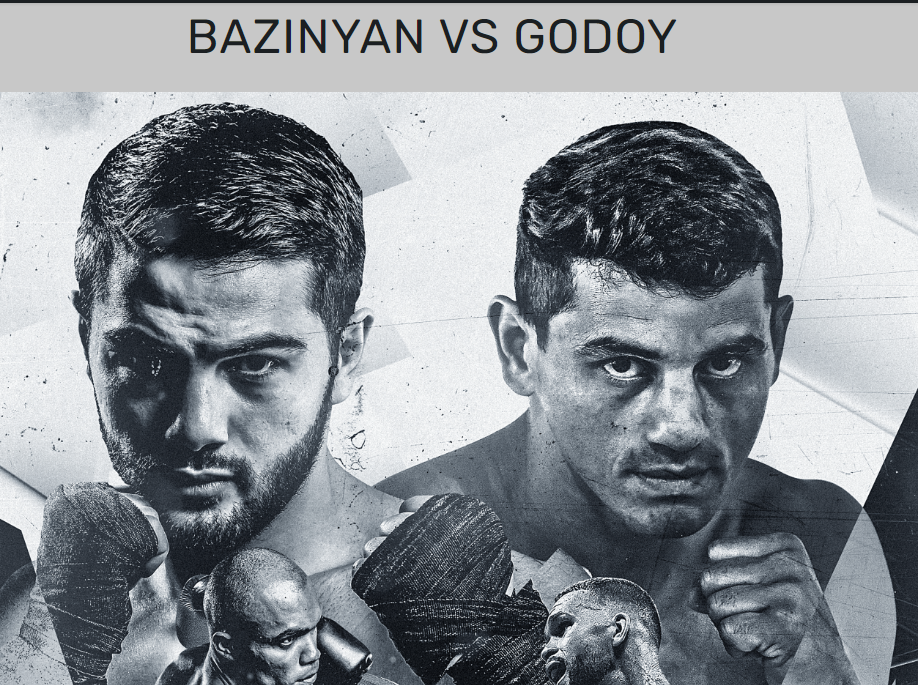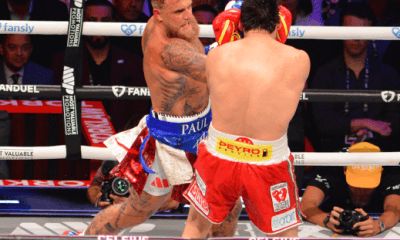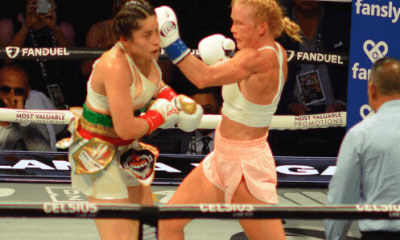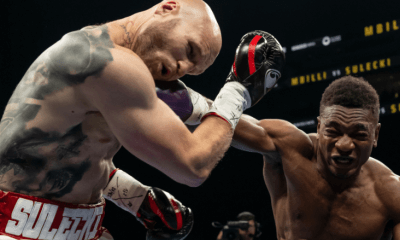Featured Articles
Erik Bazinyan Improves to 32-0 on a Flaccid Night of Boxing in Montreal

Erik Bazinyan Improves to 32-0 on a Flaccid Night of Boxing in Montreal
Eye if the Tiger Promotions founder Camille Estephan, whose roster includes Artur Beterbiev, was back at his familiar haunt tonight, the Montreal Casino, with a card that aired in the U.S. on ESPN+. All of Estephan’s house fighters won and they won too easily. The fans in attendance got little bang for their buck and were entitled to a refund.
Estephan has an interesting dilemma. He has two super middleweights who are on track to secure big-money fights, Christian Mbilli and Erik Bazinyan. Mibill is plainly the better of the two, but Bazinyan, ranked in the top five by all four of the major sanctioning bodies, has inched closer to a world title fight. A native of Armenia who moved with his parents to Canada at the age of 16, Bazinyan advanced his ledger to 32-0 (23 KOs) tonight with a third-round stoppage of 37-year-old Argentina import Billi Facundo Godoy (41-8).
Godoy, who missed all of 2020 and most of 2021 with an injury and hadn’t defeated anyone of consequence since 2018, proved to be easy meat for the house fighter. Bazinyan staggered him in the opening round and then pushed him to the canvas. Godoy appeared to suffer a calf injury to his right leg and was given time to recover. He lasted into the third frame when Bazinyan deposited him on the canvas with an overhand right. The referee counted “10” and the bout was over after less than nine minutes of actual fighting. It was the sixth time that the Argentine journeyman had been stopped.
Co-Feature
What shaped up as the best fight on the card was actually a rather monotonous affair. Light heavyweight Albert Ramirez, a 31-year-old Venezuelan southpaw, won as expected, turning away Artur Ziiatdinov with a unanimous 10-round decision, but didn’t look especially impressive, notwithstanding the wide scorecards (100-90- 99-91, 98-92).
Ramirez, ranked #4 by the WBA
A 2016 Rio Olympian, he was 8-2 in five-round fights including wins over Cuban standouts Julio Cesar la Cruz and Erislandy Savon. As a pro he has yet to be beaten, advancing his ledger to 18-0 (15) tonight.
Ziiatdinov, 27-year-old Montreal-based Ukrainian, also had strong amateur pedigree. He was reluctant to let his hands go in the early rounds and when he finally accomplished some good things, it was too little, too late and he lost for the second time in 17 outings as a pro.
Also
In a stay-busy fight, 34-year-old Calgary native Steve Claggett, a super lightweight, continued his late career surge with a quick stoppage of Mexico’s Marcos Gonzalez whose corner stopped the fight after only two rounds. It was the ninth straight win for Claggett (38-7-2, 26 KOs), a high-pressure fighter with busy hands who sports the nickname Dragon and revealed in the post-fight interview that he is half-Chinese. The 33-year-old Gonzalez, who sells french fries in Juarez, declined to 23-4.
In a gross mismatch between two women in their late thirties, super welterweight Mary Spencer (8-2, (6 KOs) rebounded from back-to-back defeats to former three-time world title challenger Femke Hermans of Belgium with a fast stoppage of Albertville, Alabama’s Sonya Dreiling (6-4) who was one-and-done after one 2-minute round.
This was designed as a confidence-booster for Spencer, an Indigenous Canadian on her father’s side who had a decorated amateur career.
As was the case with Steve Claggett, the post-fight interview consumed much more time than did the actual fight.
To comment on this story in the Fight Forum CLICK HERE
-

 Featured Articles3 weeks ago
Featured Articles3 weeks agoAvila Perspective, Chap. 330: Matchroom in New York plus the Latest on Canelo-Crawford
-

 Featured Articles1 week ago
Featured Articles1 week agoVito Mielnicki Jr Whitewashes Kamil Gardzielik Before the Home Folks in Newark
-

 Featured Articles4 weeks ago
Featured Articles4 weeks agoAvila Perspective, Chap 329: Pacquiao is Back, Fabio in England and More
-

 Featured Articles3 weeks ago
Featured Articles3 weeks agoOpetaia and Nakatani Crush Overmatched Foes, Capping Off a Wild Boxing Weekend
-

 Featured Articles2 weeks ago
Featured Articles2 weeks agoCatching Up with Clay Moyle Who Talks About His Massive Collection of Boxing Books
-

 Featured Articles3 weeks ago
Featured Articles3 weeks agoFabio Wardley Comes from Behind to KO Justis Huni
-

 Featured Articles4 weeks ago
Featured Articles4 weeks agoDelving into ‘Hoopla’ with Notes on Books by George Plimpton and Joyce Carol Oates
-

 Featured Articles1 week ago
Featured Articles1 week agoMore Medals for Hawaii’s Patricio Family at the USA Boxing Summer Festival





















